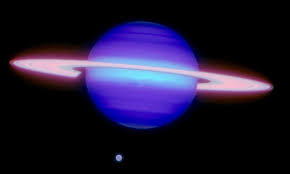The question of “Is Saturn a failed Star?” has been bothering me for some time now. Recently, an acquaintance gave me this interesting explanation of how the solar system works and why it might have been able to produce planets, but none that we see now. He also explained to me that there is a possibility that our solar system will be discovered by future technologies much more advanced than what we currently know or are even capable of building at this time.
A failed star? Perhaps not, but it does raise a very good question, can any planet be retrofitted into a habitable place by future technologies? It also raises questions about the solar system and the chances of discovering other planets in our galaxy as we become a bigger and larger part of that huge space.
I’ve written many articles on the subject and this one’s a quick and simple review of a few important points. But remember too that we have discovered comets and other small space objects in our solar system that may be much larger than we first thought. So it would be premature to declare that all types of failed stars in the solar system are gone forever.
Can the solar system’s failure to be pinned down to a single cause? That’s impossible to say without further research, but it is worth pointing out that one of the most frequent causes of planetary formation is collision. Small rocky grains can knock into larger space objects, causing many collisions. If we think in terms of planetary debris, all these smaller rocks are passing through space at a very high speed, so it would make sense that they would all impact at once and at different rates.
If this was the only collision within the solar system that caused all the missing material, then we would expect the outer layer of the solar system to get slammed with a rock from all different collisions. But this is not what is happening! The Cassini probe has found that there are three large planetoids that have failed to hit the solar system at all. The “B belt” of planets, which are rocky like Earth but made up of ice, was found to be completely devoid of any collisions of this sort.
Does this mean that all was lost and the solar system was doomed? Not necessarily. Many of the inner planets in our solar system are making their way through the G-scale of the large asteroid belt. And some of the smaller rocky objects have also been discovered to be making their way into the inner solar system. Therefore, while we can’t say for sure what happened to Saturn, it does seem very likely that other chunks of space rock or ice will also find their way to our planet.








![How Can You fixed [pii_email_e26dbf79d8c0635e5ca7] Error?](https://desinuts.com/wp-content/uploads/2022/05/pi-1-300x200.jpg)